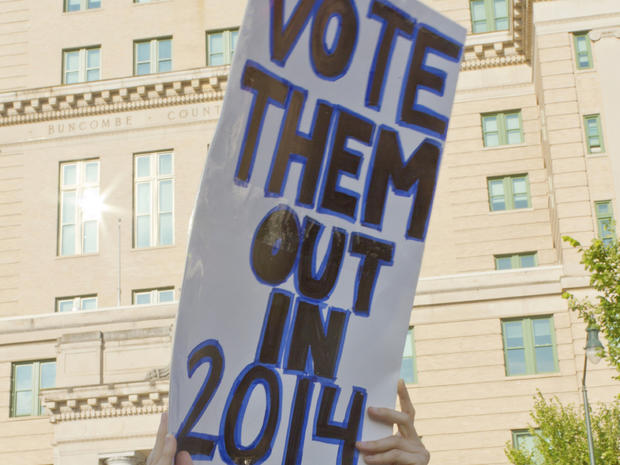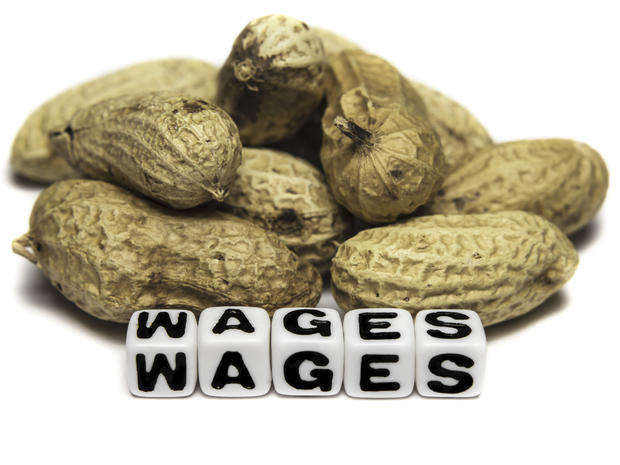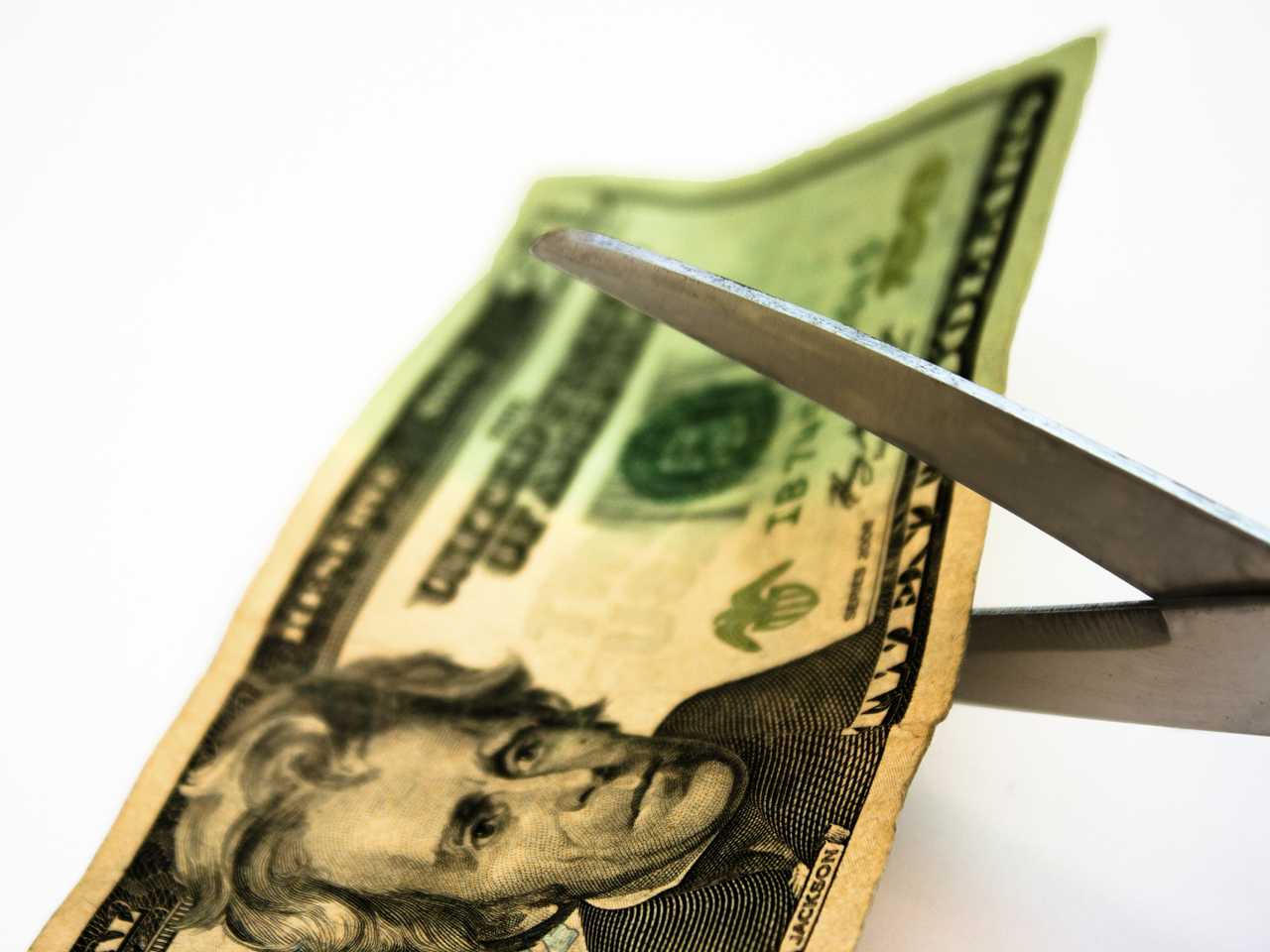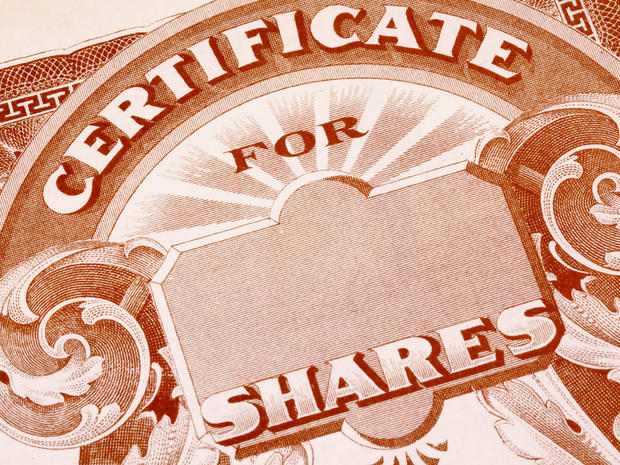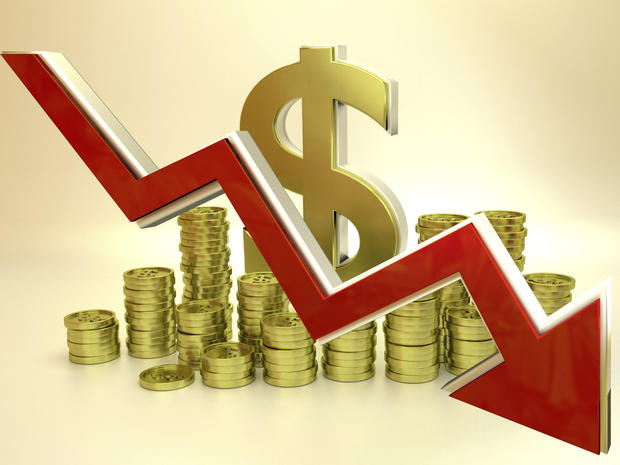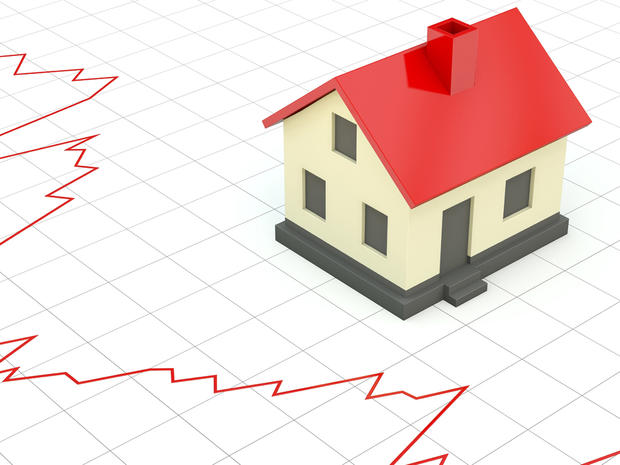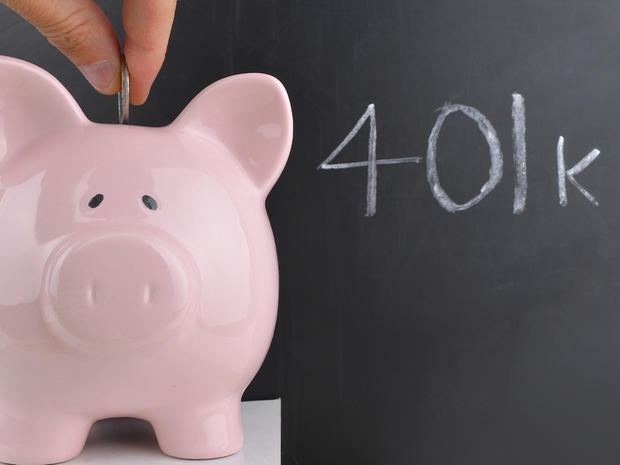10 reasons Americans are down on the economy
Experts say the U.S. economy is turning around, but many Americans just aren't buying it.
Growth is picking up, unemployment is down, inflation is low and consumers are getting more confident. The economy is widely expected to continue improving, with most of the ingredients in place for a stronger recovery.
Of course, it's one thing to be told things are getting better, quite another to see it and know in your bones that things have turned a corner. And for much of America, that simply isn't happening.
Look at the exit polling from last week's midterm elections. The message in survey after survey was clear: Most people think the economy is headed in the wrong direction. Generally, when people think the country is on the wrong track, they hold the President's party responsible. That held true last week, as Democrats got soundly shellacked.
But why are Americans so pessimistic even as the economic picture looks brighter? As it turns out, there are a number of problems festering under the surface of the recovery that people just can't ignore.
Read on for 10 reasons Americans are down on the economy.
Weak wage growth
American wages are not growing the way they should, especially when inflation and other price increases are factored in. In 1979, for example, about 80 percent of all private-sector employees made an inflation-adjusted $15.75 an hour. Fast forward to 2013, and the median is only $16.70 an hour.
If that isn't striking enough for you, how about this: The median U.S. income this year was $53,385, according to Sentier Research. That's down 4 percent from the $55,446 people earned in 2009.
The latest numbers aren't encouraging. Wages inched up a measly 3 cents in October and are rising at an annual rate of 2 percent, or just ahead of inflation. If wage growth is set to accelerate, as many economists expect, for now pay increases are anemic.
Broad declines in wealth
Most Americans have less wealth now than they did 25 years ago, according to a report from the Center for Economic and Policy Research, a liberal-leaning think tank. Wealth grew intermittently in the U.S. from 1989 to 2007, but then shrank from that point.
The median net worth in America fell to $81,400 in 2013 from $85,100 in 1989, the report said. Meanwhile, all of the economic gains during the recovery that have followed the housing crash have gone to top-income earners, statistics show.
"This is especially bad for those nearing retirement," said economist Dean Baker, an author of the report. That's because those near-retirees will not benefit as much from any future improvements in the economy. They have to depend on their current wealth, which may have been battered and bruised in the recession.
Missing out on market gains
If you have a fat portfolio of stocks, bonds and other investments, you've had a very good year. The stock market has hit one record after another in 2014, most recently last week after the Republicans cleaned up in the midterm elections.
But trading stocks is a dying art. Only 15 percent of families directly owned stocks in 2010, according to The Federal Reserve. That's down from 21.3 percent in 2001. The stock market has become the playground of the wealthy; poorer families generally have neither the means nor the appetite for risk that are often required for direct trading.
More Americans are in the stock market through retirement accounts and other assets, but that's fallen as well. By 2010, only 51 percent of U.S. workers could enroll in a retirement plan at work, according to public-policy think tank Demos. Some 53 percent of Americans avoid the market completely, according to a Pew Research survey last year.
Rising income inequality
The rich are getting richer. A recent paper finds that over the last three decades, the top 0.1 percent of Americans have seen their share of household wealth rise to 22 percent from 7 percent. That's almost as high as in the late 1920s, when robber barons ruled the Gilded Age, write the study's authors, economists Emmanuel Saez and Gabriel Zucman.
By contrast, the bottom 90 percent of families -- already facing stagnant wages and salaries -- are suffering under a crushing debt load. Many of them have higher mortgages to pay and higher credit card and student loan balances.
"The combination of higher income inequality alongside a growing disparity in the ability to save for most Americans is fueling the explosion in wealth inequality," the economists write.
Shrinking middle class
A vibrant middle class is the cornerstone of a strong national economy. America's middle class is getting weaker, however, with those on the lower rungs sliding into poverty.
The middle class -- defined by the middle 60 percent of households -- collects about 45.7 percent of national income. That's down significantly from 53.2 percent in 1968, according to U.S. Census figures analyzed by the left-leaning Center for American Progress Action Fund.
But it's not only a matter of dollars and cents -- people's self-perceptions are changing as wealth and income pools at the top. The share of Americans who call themselves middle class has never been lower, at 44 percent, a survey from Pew Research Center and USA Today found earlier this year. That's down from 53 percent in 2008. At the same time, the share of Americans who say they are in the lower or lower-middle classes rose to 40 percent from 25 percent.
Low interest rates hurt savers
Saving money is normally a great thing, but over the last few years rock-bottom interest rates have meant that savers get practically no reward for their efforts.
That means seniors in particular, and others who traditionally count on interest gains, for some of their income have had to go without.
With interest rates so low, there has been no incentive to save. The top 1 percent of families now save about 35 percent of their income, and the bottom 90 percent save nothing, according to research from economists Emmanuel Saez and Gabriel Zucman.
Rise of the McJobs
Low-wage jobs have dominated the economic recovery, placing people into fast-food and other service-sector positions that offer few benefits or opportunities for promotion. Since the recession, there are 1.2 million fewer jobs in mid- and higher-wage industries, while lower-wage industries have grown by 2.3 million jobs, according to a study from the National Employment Law Project.
At Walmart (WMT), for example, wages are so low that workers seek an estimated $6.2 billion in food stamps, Medicaid and other forms of public assistance, according to a report from progressive advocacy group Americans for Tax Fairness.
About 6,000 of Walmart's 1.3 million workers make the federal minimum wage of $7.25 an hour, and the company is planning to move above the minimum wage completely at some point. It hasn't offered many details about those plans, however. Walmart says its average full-time wage is $12.92 an hour, but that doesn't include the pay for part-time workers.
Home loans are hard to get
Banks tightened up their credit and loan standards considerably after the housing market crash and the Great Recession. Even now, more than five years later, lenders still want homebuyers to have stellar credit and a boatload of money for a down payment.
That's taken a toll on first-time home buyers. The share of first-time buyers has fallen to its lowest point in nearly three decades, according to a recent survey from the National Association of Realtors. Only about a third of people buying homes now are first-timers, down from the historical average of 40 percent.
The housing market is tough for previous and existing homeowners as well. "Short sales" and foreclosures made up about 13 percent of sales in the third quarter nationwide, according to data from RealtyTrac. That rate, while still high, has fallen because many properties have finally finished the years-long foreclosure process.
On the plus side, home prices continue to rebound. And while that may not be good news for first-time homebuyers, it means that some households that have been hobbled by underwater mortgages are starting to see relief.
Insufficent retirement savings
Some 40 percent of Americans haven't started saving for retirement, according to the BlackRock Global Investor Pulse Survey. Most of the people who have saved don't have more than $25,000 to show for it, either.
American workers used to count on pensions to help them through their golden years, but companies have mostly done away with pensions in favor of 401(k) plans. The plans shift the burden of retirement investing to workers, but many of them don't have enough information to make the right decisions, such as being aware of all the fees or how to adjust to stock market swings.
The survey also found that nearly two-thirds of the money saved by Americans are held in cash. They like cash because it makes them feel safe -- the downside is that they're missing out on stock market returns.
Soaring college costs
Tuition at Columbia University, one of the priciest schools in the country, costs an average of $213,520 for four years, according to Business Insider.
That sounds outrageous, but that's about what new parents are looking at for in-state tuition in the future. Parents of newborns should expect a degree from a four-year, in-state public college to cost about $222,000, according to Kiplinger's Personal Finance.
Wrestling with college costs can tank a family's finances. Parents and grandparents have taken out loans to foot the bill, only to put their retirement nest eggs at risk. Students shoulder the burden as well, and more than two-thirds of college seniors graduate with student debt, some of which could take decades to pay off.
